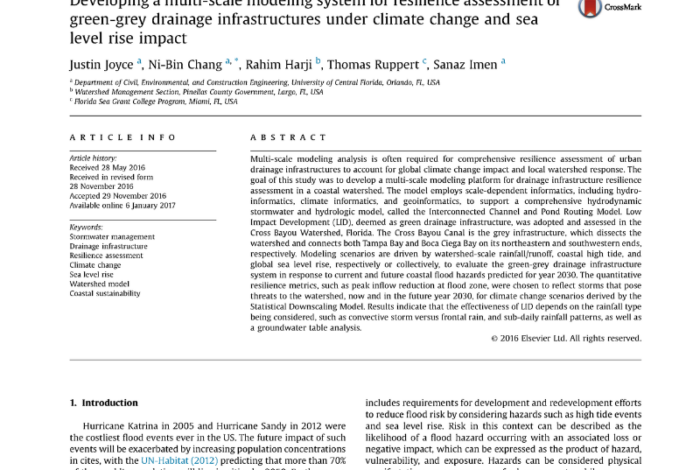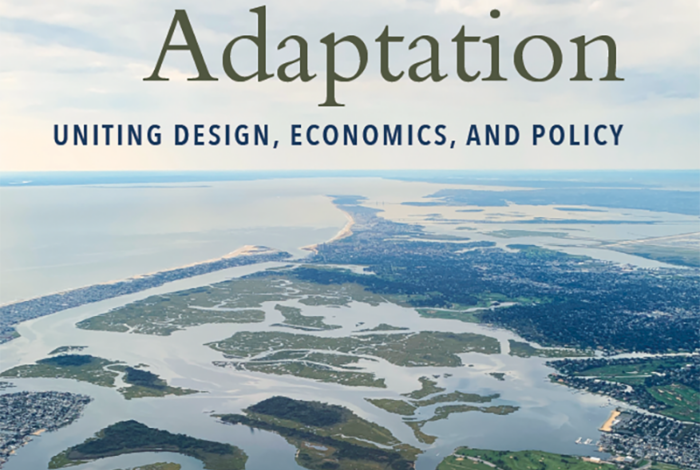
Developing a multi-scale modeling system for resilience assessment of green-grey drainage infrastructures under climate change and sea level rise impact
Multi-scale modeling analysis is often required for comprehensive resilience assessment of urban drainage infrastructures to account for global climate change impact and local watershed response. The goal of this study was to develop a multi-scale modeling platform for drainage infrastructure resilience assessment in a coastal watershed. The model employs scale-dependent informatics, including hydroinformatics, climate informatics, and geoinformatics, to support a comprehensive hydrodynamic stormwater and hydrologic model, called the Interconnected Channel and Pond Routing Model. Low Impact Development (LID), deemed as green drainage infrastructure, was adopted and assessed in the Cross Bayou Watershed, Florida. The Cross Bayou Canal is the grey infrastructure, which dissects the watershed and connects both Tampa Bay and Boca Ciega Bay on its northeastern and southwestern ends, respectively. Modeling scenarios are driven by watershed-scale rainfall/runoff, coastal high tide, and global sea level rise, respectively or collectively, to evaluate the green-grey drainage infrastructure system in response to current and future coastal flood hazards predicted for year 2030. The quantitative resilience metrics, such as peak inflow reduction at flood zone, were chosen to reflect storms that pose threats to the watershed, now and in the future year 2030, for climate change scenarios derived by the Statistical Downscaling Model. Results indicate that the effectiveness of LID depends on the rainfall type being considered, such as convective storm versus frontal rain, and sub-daily rainfall patterns, as well as a groundwater table analysis.

